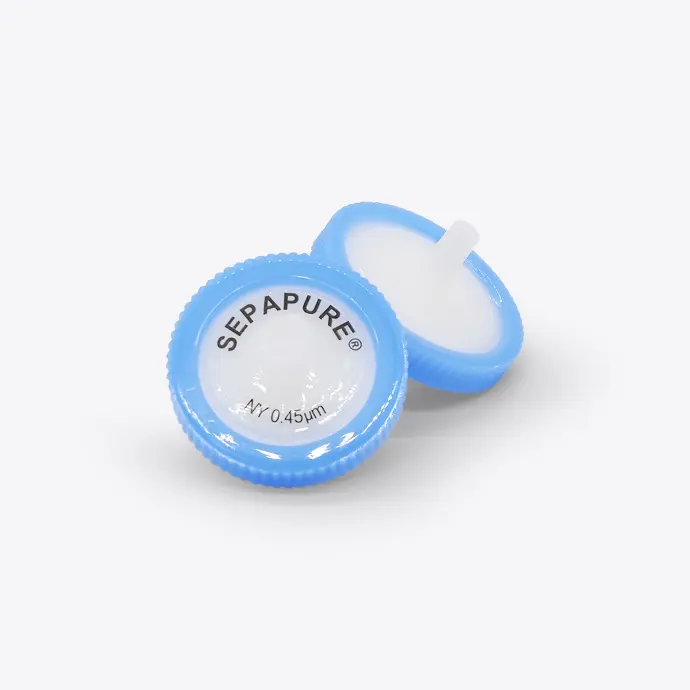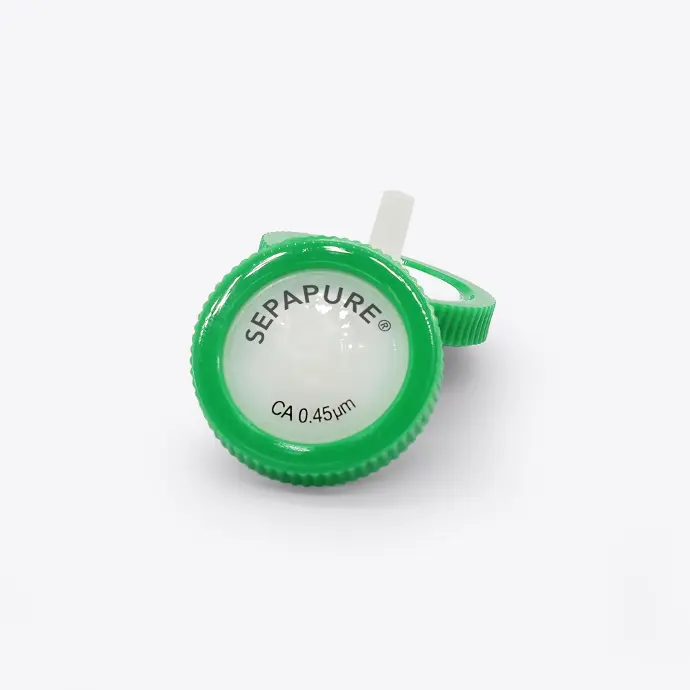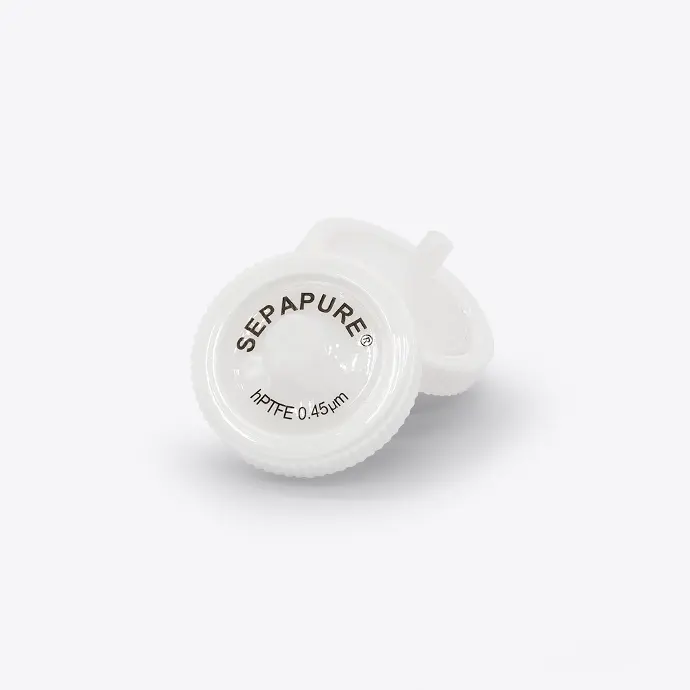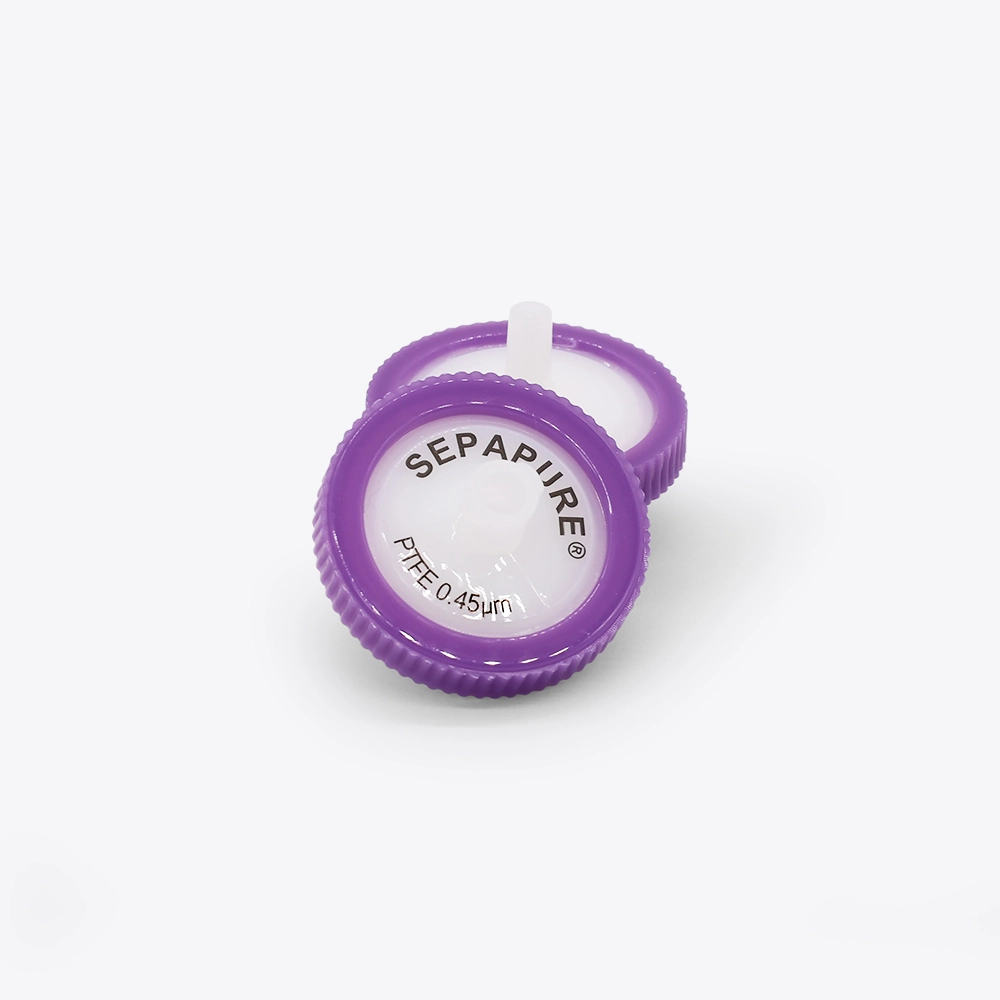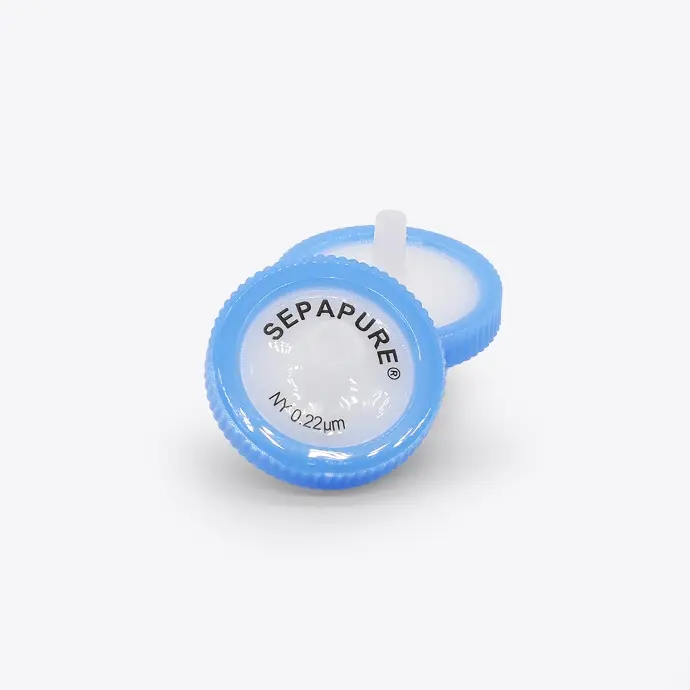How to Choose the Right Membrane for Your Syringe Filter
Picking the right membrane for your syringe filter is crucial for ensuring the accuracy and consistency of your laboratory results. Whether you choose a nylon, PTFE, or cellulose acetate syringe filter, the membrane material can significantly impact the efficiency of your filtration process and the integrity of your samples. In this blog post, we’ll explain why choosing the appropriate membrane matters, explain the different types of membranes available, and provide a step-by-step guide to help you make the best choice for your specific needs.
Why to use Syringe Filters?
Syringe filters are used with so called “dirty” samples to prevent damage or clogging of your HPLC system, improve analysis accuracy, and ensure consistent results. The selection of the right membrane of your filter is a crucial step to increase the ruggedness of your HPLC method. The requirements for the right membrane are to remove undesired particles, without altering the sample composition and so impacting the outcome of your experiments. Remember that the membrane is in contact with your sample and sample solvent. Now, let´s see how to choose the right membrane.

Photo by KNAUER
How to Choose the Right Membrane for your Syringe Filter
1. Understand the Sample Composition
The type of membrane you should use depends largely on the chemical composition of your sample. Here are some common membrane materials and their compatibility:
Nylon
Nylon: Nylon membranes are versatile and widely used in HPLC applications due to their compatibility with both aqueous and most organic solvents.
When to use:
- Ideal for general-purpose filtration in HPLC sample preparation, especially when dealing with polar solvents or a mixture of aqueous and organic phases.
- When you need to remove particles from your sample before injection to prevent column blockage and ensure reproducible results.
Do not use:
- Avoid using Nylon with strongly acidic samples or solutions with pH values below 3, as they can degrade the membrane.
- Not recommended for protein-rich samples, as Nylon tends to bind proteins, potentially leading to sample loss or inaccurate quantification.
CA (Cellulose Acetate)
CA (Cellulose Acetate): Cellulose acetate membranes are known for their low protein-binding properties, making them ideal for biological samples.
When to use:
- Best for filtering biological samples, such as serum or cell culture media, where protein binding needs to be minimized to maintain the integrity of the sample.
- Suitable for aqueous filtration in research labs where preserving enzyme activity or protein concentration is critical for downstream applications.
Do not use:
- Avoid using organic solvents, which can dissolve or damage the CA membrane.
- Not ideal for highly acidic or highly basic samples, as extreme pH conditions can degrade the material.
hPTFE (Hydrophilic Polytetrafluoroethylene)
hPTFE membranes offer excellent chemical resistance and are hydrophilic, making them ideal for various sample types in HPLC applications.
When to use:
- Perfect for filtering both aqueous and organic solvents, making it highly versatile in HPLC sample preparation.
- Suitable for use when you need compatibility across a wide pH range or when samples contain both aqueous and solvent-based components.
Do not use:
- Do not use extremely high-viscosity samples, as hPTFE may experience clogging.
- Not recommended when you are doing PFAS analytics, as traces of fluorinated materials might disrupt the integrity of the sample.
PTFE (Polytetrafluoroethylene)
PTFE membranes are highly hydrophobic and chemically resistant, ideal for aggressive chemical environments.
When to use:
- The best option for samples containing aggressive solvents, strong acids, bases, or other corrosive materials.
- Recommended for applications in chemical analysis, environmental testing, or industrial HPLC where solvents like acetone, hexane, or other non-polar organic solvents are frequently used.
- Ideal for filtering samples that are mostly organic solvent-based or when high chemical compatibility is required.
Do not use:
- Avoid using PTFE membranes with aqueous solutions unless they are pre-wetted or used in conjunction with a hydrophilic layer.
- Not suitable for protein-based or hydrophilic sample preparations, as the hydrophobic nature can cause sample retention or inadequate filtration.
Fig. 1–4 Nylon (top left), CA (top, right), hPTFE (bottom, left), and PTFE (bottom, right)
2. Determine the Pore Size
The membrane pore size is critical for ensuring the removal of particulates without losing essential analytes. Standard pore sizes include:
- 0.2 µm: Used for sterilization and removing fine particulates. Necessary for UHPLC and MS applications.
- 0.45 µm: General-purpose filtration for most laboratory applications.
- 1.0 µm and larger: Used for pre-filtration or samples with high particle content.
Fig. 1–2 0.22 µm (left), and 0.45 µm (right) Nylon Syringe Filter
3. Evaluate Chemical Compatibility
Ensure the membrane material of your syringe filter is chemically compatible with your sample and solvents to avoid degradation or sample contamination. You can refer to chemical compatibility charts here: Solvent chart. Solvent chart.
4. Consider the Application
The specific application of your syringe filter also influences the membrane choice. For example:
- HPLC (High-Performance Liquid Chromatography): PTFE or Nylon membranes are typically preferred.
- Protein Analysis: CA, PVDF or PES membranes are recommended for low protein binding.
- Microbial Testing: Mixed cellulose ester (MCE) membranes are often used for microbial analysis.
5. Review Filter Certification and Quality
Choose membranes that meet industry standards and certifications, such as ISO or CE marking, to ensure high quality and reliability. This is particularly important for applications requiring regulatory compliance.
Tips and Reminders for Using Syringe Filter Membranes
- Pre-Wet the Membrane: Pre-wet hydrophobic membranes with a compatible solvent to ensure effective filtration.
- Avoid Overpressure: Avoid exceeding the recommended pressure to prevent membrane rupture and sample loss. Use Luer lock syringes.
- Single-Use Only: Use each syringe filter for a single sample to avoid cross-contamination.
- Proper Disposal: Dispose of used filters according to your laboratory’s waste management guidelines.
What is important in the end?
It is crucial to choose the appropriate membrane for your syringe filter to ensure accurate and reliable laboratory results. By understanding the composition of your sample, evaluating chemical compatibility, and considering your specific application, you can make an informed decision that will improve your analytical outcomes.
If you want to optimize your HPLC workflow, check out our brand-new SEPAPURE Syringe Filter.
For further information on this topic, don't hesitate to get in touch with our author:Dr. Jakob Große-Leppkes


